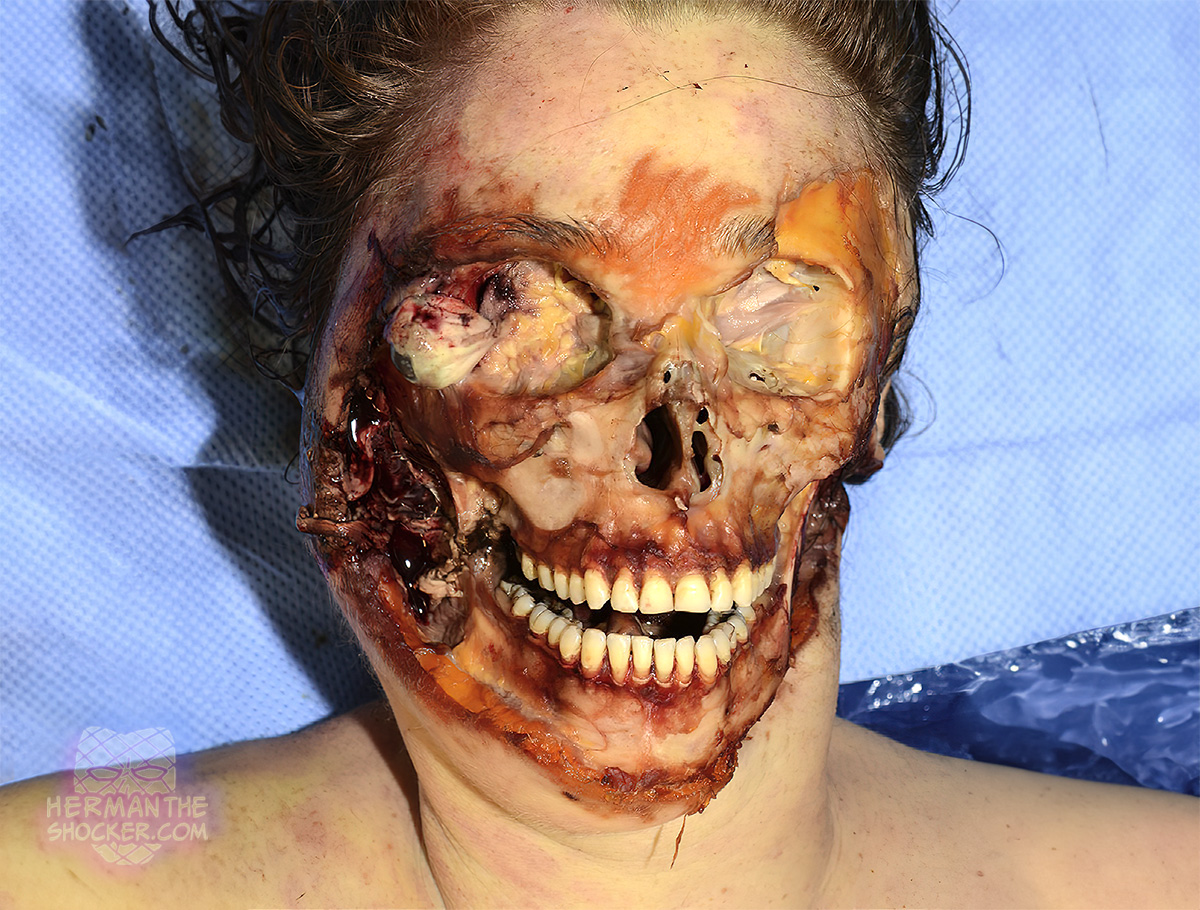This woman was located deceased at home in her bedroom wearing only a pair of underpants, lying on her back. She was located approximately 1 week after being reported missing. There was a puppy present in the house. She had died from complications of chronic alcohol abuse.
There was extensive evidence of scavenging on the face. The left orbit was empty and the right orbit was devoid of supporting tissue but the globe was in situ. The ears were partially scavenged, and there was a complete loss of soft tissue around the nose and cheeks. The anterior two-thirds of the tongue was absent as a result of scavenging.
There was no evidence of scavenging or injury to the neck and rest of the body. Postmortem CT showed no evidence of the effects of scavenging on the skull with the exception of some slight damage to the nasal bones. The face, hands, and legs of a deceased person are areas of the body that are unclothed and, therefore, easily accessible. Consequently, these regions (in both adults and children) are frequently destroyed by domestic pets in indoor settings.
In this case, however, the focus of scavenging was the face, despite the absence of clothing over the entire body. This particular scavenging pattern may be because of the fact that the dog was a puppy; there was a relatively short period of time between the individual being reported missing and the discovery of the body, and/or the fact that the individual was a chronic alcoholic. Drugs and alcohol have been reported as mitigating intrinsic factors that affect scavenging patterns.
In cases with postmortem animal predation, the psychological state of the animal is a possible reason for its behavior. One possible explanation for such behavior is that a pet will try to help an unconscious owner first by licking or nudging, but when this fails to produce any results the behavior of the animal can become more frantic and in a state of panic can lead to biting. The motive is not to attack the owner but is a kind of ‘‘displacement’’ behavior motivated by confusion and fear. The fact that the efforts of the animal will obviously be fruitless explains why this can easily escalate and culminate in excessive mutilation.
Latest posts












